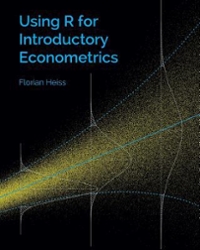Question
Question 3 Consider a two-period model of small open economy with endowment (i.e. without production). We assume that the world interest rate is fixed at
Question 3 Consider a two-period model of small open economy with endowment (i.e. without production). We assume that the world interest rate is fixed at zero, (r = 0). A representative household's preferences are given by u(C1) + Eu(C2) where E denotes expected value. They maximize the expected lifetime utility subject to the period budget constraints. They receive endowments in the first period (Q). Households endowments in the second period is stochastic. That is, Q2 = Q + with probability 0.5 and Q2 = Q with probability 0.5. They inherited zero wealth, thus B0 = 0. They optimally decide how much to consume in the first period (C1) and second period (C2) as well as bond holdings (B1) in the first period, which pays the interest rate r = 0. We assume the transversality condition holds so that B2 = 0.
a) Assuming u(C1) + Eu(C2) = ln C1 + E ln C2, derive the first-order condition with respect to C1. Provide a brief interpretation of the condition.
b) Assuming u(C1) + Eu(C2) = ln C1 + E ln C2, state and interpret the relationship between and consumption in period 1. What will also be the result of uncertainty on the trade balance and on the current account in period 1?
Step by Step Solution
There are 3 Steps involved in it
Step: 1

Get Instant Access to Expert-Tailored Solutions
See step-by-step solutions with expert insights and AI powered tools for academic success
Step: 2

Step: 3

Ace Your Homework with AI
Get the answers you need in no time with our AI-driven, step-by-step assistance
Get Started


